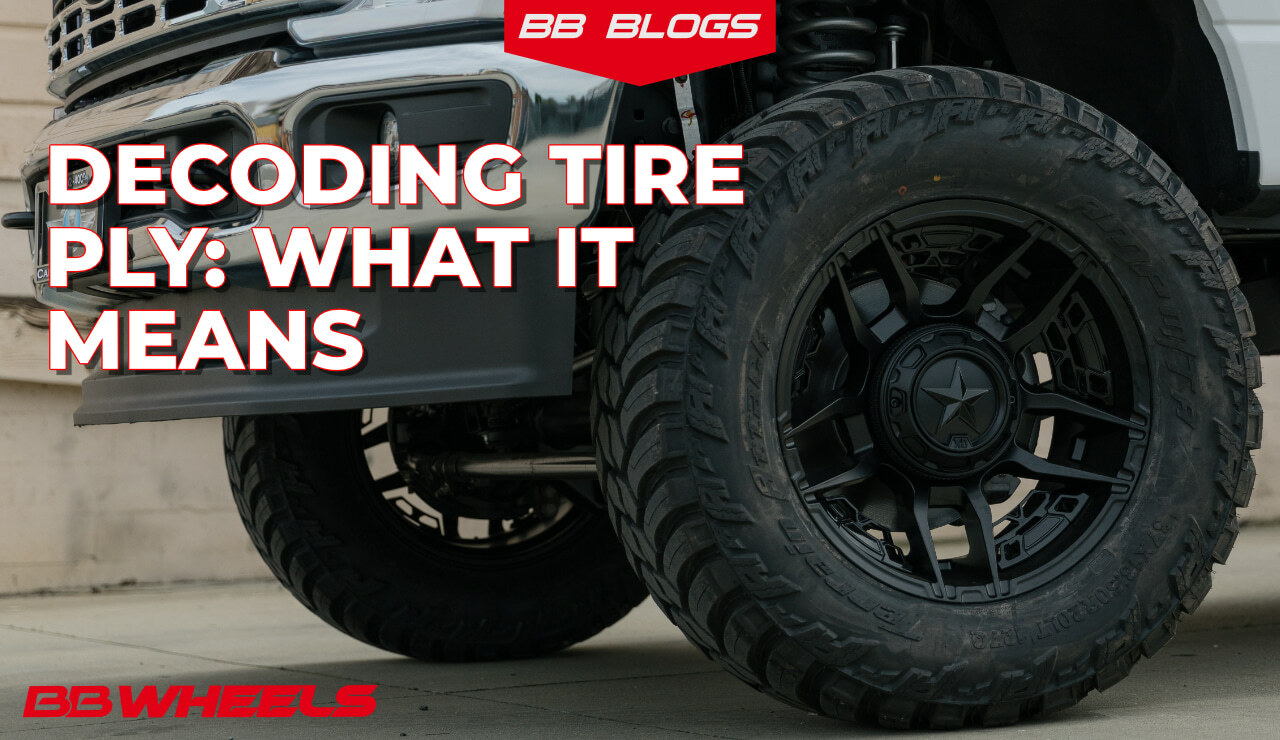What Does Ply Mean on Tires? Understanding Ply Ratings and Load Range
Posted by BB Wheels on 22nd Apr 2024

What Does Ply Mean on Tires? Understanding Ply Ratings and Load Range
When it comes to buying new tires, understanding the terms "ply rating" and "load range" can greatly influence your purchase decision. These ratings are crucial indicators of a tire’s strength, durability, and load-carrying capacity. This post explores what ply ratings and load ranges mean, their evolution, and their relevance today, making these concepts clear and accessible for all vehicle owners.
What are Tire Ply Ratings?
Originally, a tire's ply rating referred to the number of layers—made from materials like cotton—that comprised the tire’s structure. Each ply added to the tire’s ability to withstand more pressure and carry heavier loads. However, modern tire technology has evolved from counting actual layers to using ply ratings as a standardized measure of strength and durability. Today's ply rating indicates the equivalent strength of a tire, which can be deceptive as modern tires do not necessarily contain the number of plies suggested by their rating.
Introduction to Load Range
Load range indicates the maximum weight a tire can safely support when properly inflated. It's directly linked to the ply rating in that higher ply ratings usually signify a higher load range, but with modern materials, the number of physical plies might be fewer while still providing the same or better strength. Load ranges are marked on tires with letters (e.g., B, C, D, E, F) where each letter represents a specific capacity and ply rating standard, making it easier for consumers to understand what their vehicle needs based on usage and load requirements.
Load Range and Ply Rating Chart
| Load Range | Ply Rating |
|---|---|
| B | 4 Ply |
| C | 6 Ply |
| D | 8 Ply |
| E | 10 Ply |
| F | 12 Ply |
Historical Perspective on Tire Plies
In earlier times, tire ply design involved multiple layers of natural materials such as cotton. The primary goal was to enhance the tire's durability and capacity to handle loads. As advancements in materials science progressed, manufacturers began using synthetic fibers like nylon, polyester, and steel, which offer superior strength and endurance. This shift not only improved tire performance but also allowed for the development of the modern ply rating system, which better reflects the capabilities of contemporary tire technology.
Modern Advances in Tire Technology
The transition from natural to synthetic materials dramatically changed tire construction. Modern tires with fewer layers can achieve higher ply ratings and load ranges due to the strength and resilience of the materials used. This evolution means that modern tires are not only lighter and more efficient but also capable of handling greater stresses and loads than their predecessors.
Wrapping Up
Understanding what ply means on tires and how it relates to load range is crucial for anyone looking to purchase new tires. These metrics help determine how well a tire can perform under various conditions and loads, ensuring safety and efficiency for all types of vehicles. Whether you're replacing old tires or choosing new ones for specific conditions, a clear grasp of ply ratings and load ranges will guide you to make the best choices for your vehicle and driving needs. If you have questions or need assistance in selecting the right tires for your vehicle, don't hesitate to call us at 320-333-2155. Our experts are ready to help you find the perfect fit for your needs and ensure you're equipped for the road ahead.

